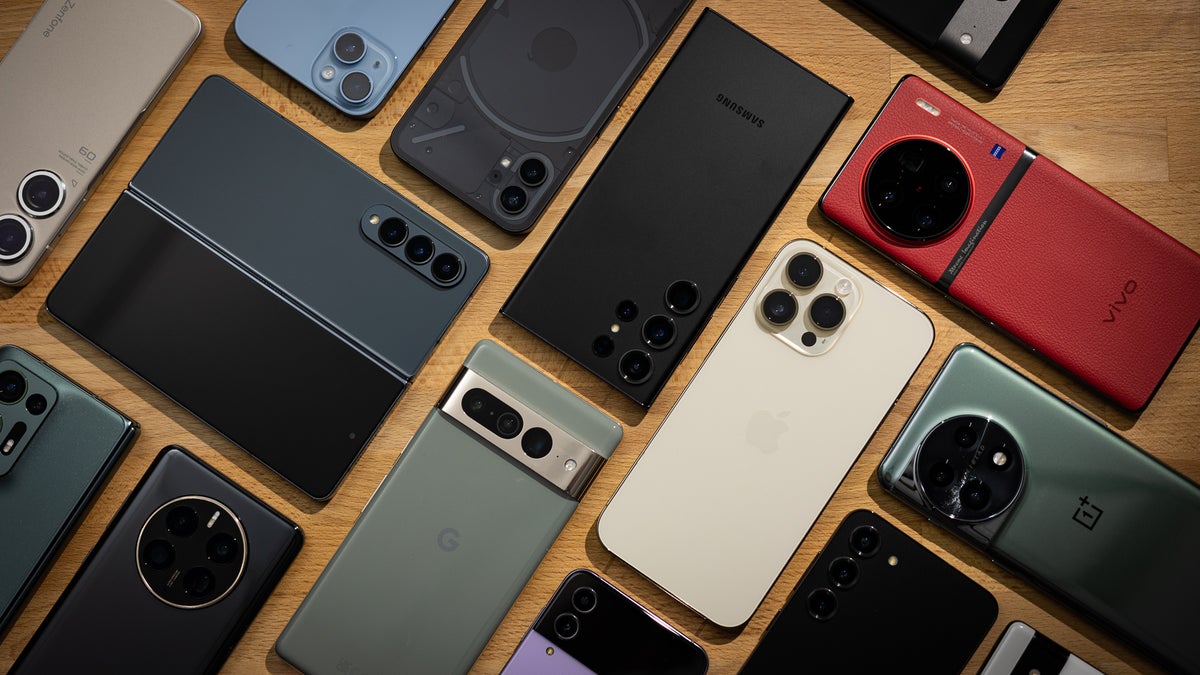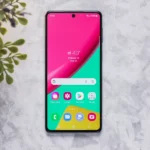How To Take Screenshots On Phones When Not Allowed?
In the digital era, there are moments we wish to immortalize with a simple click, but some platforms or applications throw up barriers, preventing us from taking that coveted screenshot. Fear not, here we are going to learn about how to take screenshots on phones when not allowed. Have you ever encountered a situation where you desperately wanted to capture a moment on your screen, only to be thwarted by the strict rules of an app or website? The frustration is real, but so is our determination to find a way around it. In this guide, we’ll explore ingenious methods that allow you to take screenshots discreetly, defying the digital limitations imposed by certain platforms. Whether you’re dealing with a restricted webpage, a secure document, or a sneaky app that denies your screenshot privileges, our arsenal of techniques will empower you to seize those moments against all odds.
So, fasten your seatbelt and get ready to embark on a journey through the tricks and tactics that make sneaky screenshots possible.
Taking Screenshots On Phones When Not Allowed By Using Manual Snipping Method:
Taking screenshots becomes an exciting challenge when faced with restrictions, but fear not; the manual snipping method is here to save the day. This technique involves using the snipping tool on your computer, providing a discreet way to capture the desired content without triggering any anti-screenshot measures.
Locate the snipping tool:
Begin by finding the snipping tool on your computer. On Windows, you can usually find it by searching in the Start menu. If you’re using a Mac, the “Grab” application serves a similar purpose.
Select the Area to Capture:
Once the snipping tool is open, choose the “New” or “Capture” option. This allows you to manually select the specific area of the screen you want to capture. Drag the cursor to highlight the content you wish to screenshot.
Save or edit the Snip:
After capturing the desired area, the snipping tool typically provides options to save, copy, or edit the snip. Choose the relevant option based on your preferences. You can save the snip to your computer or copy it to paste it into another application.
By Passing Restrictions:
Unlike traditional screenshot methods, manual snipping often goes unnoticed by applications or websites that try to block screen capturing. The selective nature of this technique allows for a more discreet capture of content.
Taking Screenshots On Phones When Not Allowed By the Use Of Camera Trickery Method:
When facing the digital barriers that deny you the simple pleasure of taking screenshots, a more analog approach can come to your rescue – enter the world of camera trickery.
Grab Your Camera or Smartphone:
Equip yourself with a camera or smartphone with a decent camera function. Ensure that the device is ready to capture the screen discreetly.
Align and Capture:
Position your camera lens in front of the screen, ensuring clarity and focus. Use the device’s camera app to capture the content on the screen. Be mindful of reflections or glare that might affect the image quality.
Review and Adjust:
After capturing the screen, review the image to ensure that the desired content is clear and visible. Adjust the positioning or lighting if necessary to enhance the quality of the captured image.
Save or Share:
Once satisfied with the captured content, save the image to your camera roll or share it as needed. This method provides a tangible image that can be easily shared or stored.
Camera trickery offers a low-tech yet effective solution for scenarios where digital methods are restricted.
How To Take Screenshots On Phones When Not Allowed By Utilizing Browser Extensions Method:
When faced with the frustration of being denied the ability to take screenshots on certain websites or applications, browser extensions come to the rescue.
Explore and Choose a Relevant Extension:
Navigate to your browser’s extension store and search for a suitable screenshot extension. Popular options include “Nimbus Screenshot” or “Lightshot.” Ensure the extension has positive reviews and is reputable before adding it to your browser.
Install the Extension:
Click on the “Add to Chrome” button to install the chosen extension.
Activate the Extension:
Once installed, activate the extension by clicking on its icon in the browser toolbar. Some extensions may require you to create an account, so follow the setup instructions if needed.
Capture the Screen:
With the extension activated, you should now have additional options for capturing screenshots. These tools often allow you to capture the entire screen, a selected area, or even the visible part of a webpage.
Save or Share the Screenshot:
After capturing the screenshot, the extension usually provides options to save the image, copy it to the clipboard, or share it directly. Choose the option that suits your needs.
With Third-Party Apps To Snap Screenshots On Phones When it’s Not Allowed:
When the digital realm attempts to thwart your screenshot endeavors, turning to third-party applications can be your secret weapon. These specialized tools often circumvent restrictions, providing you with a discreet means of capturing your screen.
Choose a Reputable Third-Party App:
Explore and select a trustworthy third-party application known for its screenshot capabilities. Examples include Snagit or Greenshot. Ensure the app is reputable by checking reviews and official sources.
Download and Install the App:
Visit the official website or app store associated with the chosen application. Download and install the third-party app on your device by following the provided instructions.
Open the Application:
Launch the installed application on your device. Familiarize yourself with its interface and any settings that may enhance your screenshot experience.
Capture the Screen:
Most third-party screenshot apps offer various capture options. You can typically capture the entire screen, a selected region, or specific windows. Use the designated capture function within the app to take the screenshot.
Save or Edit the Screenshot:
Once the screenshot is captured, the app usually provides options for saving the image or making edits. Take advantage of these features to customize the screenshot according to your preferences.
By utilizing third-party apps, you can easily take screenshots when there is any kind of restrictions.
How To Take Screenshots On Phones When Not Allowed By The Use Of Browser Developer Tools:
When the digital landscape tries to lock you out of screenshot capabilities, a more technical approach using browser developer tools can be your secret passage. Here are the simple steps to do it:
Open Browser Developer Tools:
Right-click on the webpage or element you want to capture and select “Inspect” or “Inspect Element.” This opens the browser developer tools, revealing the underlying structure of the webpage.
Locate the Image Source:
Navigate to the Elements or Network tab within the developer tools. Look for the image source URL, which is often located within the HTML or network requests. This is the URL of the image you want to capture.
Open Image in New Tab:
Once you’ve identified the image source URL, right-click on it and open it in a new tab. This will display only the image without the rest of the webpage.
Take a Screenshot:
With the image displayed in a new tab, use your device’s native screenshot function to capture the screen. On most devices, this involves pressing the “Print Screen” button or using a combination of keys.
Save or Edit the Screenshot:
After capturing the screenshot, you can save it to your device or edit it using your preferred image editing software.
By delving into the world of browser developer tools, you’ve unveiled a method to take screenshots when not allowed by traditional means. Remember that this technique requires a basic understanding of HTML and web elements.
By using the Print Screen and Editing Method To Take Screenshots On Phones When Not Allowed:
When faced with restricted screenshot capabilities, the classic Print Screen and editing method offers a straightforward workaround. Follow the below steps:
Locate the Print Screen Button:
Identify the Print Screen button on your keyboard. On most keyboards, it’s labeled as PrtScn or something similar. On some laptops, you might need to use a combination of keys, such as “Fn + PrtScn.”
Capture the Screen:
Press the “Print Screen” button to capture the entire screen or use the combination of keys to capture a specific window or area. The screen capture is copied to your clipboard.
Open Image Editing Software:
Open your preferred image editing software. This could be basic software like MS Paint or more advanced tools like Photoshop or GIMP.
Paste and Edit:
Paste the captured screenshot into the editing software using “Ctrl + V”. Crop, edit, or annotate the image as needed. This step allows you to refine the screenshot to focus on the content you want.
Save the Edited Screenshot:
Once satisfied with the edits, save the image to your desired location on your computer. You now have a discreetly captured screenshot that bypasses restrictions.
Conclusion:
In the quest to capture moments when traditional methods fail, we’ve explored various ingenious techniques. Whether through manual snipping, camera trickery, browser extensions, third-party apps, browser developer tools, or the classic print screen and editing method, you’ve gained a toolkit for navigating screenshot restrictions. Remember, with great power comes great responsibility. Use these methods ethically, respecting privacy and adhering to platform rules. Now equipped with the art of sneaky screenshots, go forth and capture those moments against all odds, ensuring your digital memories remain preserved.







